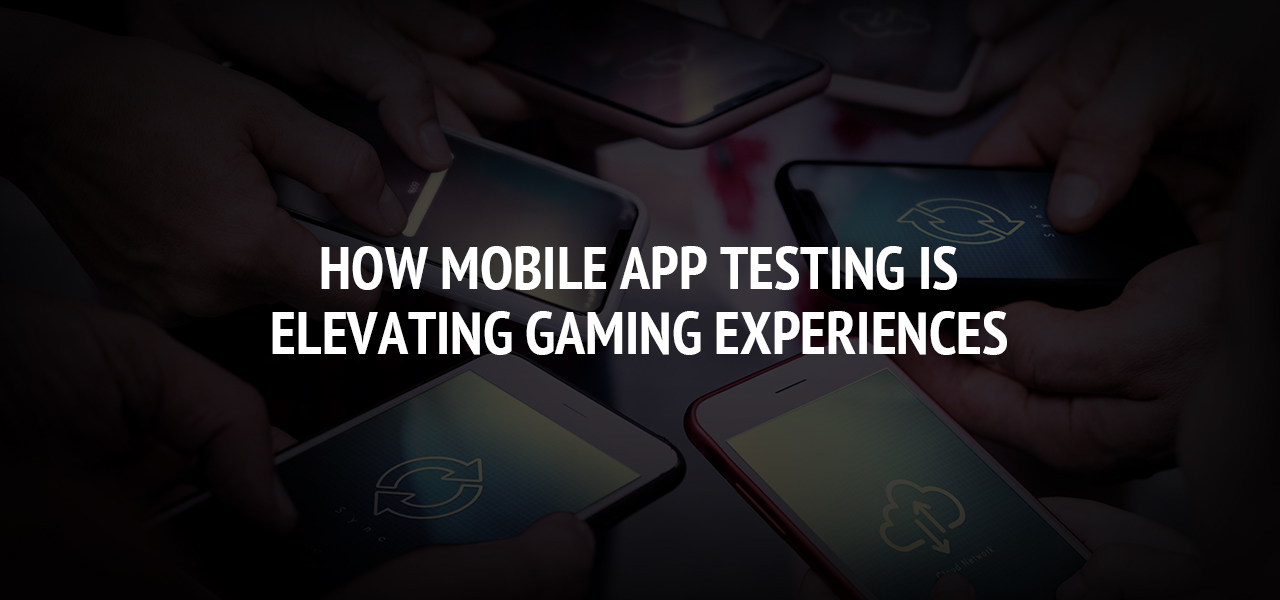How Mobile App Testing is Elevating Gaming Experiences

The mobile gaming industry is enjoying a boom. Two key factors are driving this surge:
- The widespread use of smartphones
- The rise in app development
To be successful, game developers need to give players high-quality gaming experiences. Mobile app testing services are the behind-the-scenes heroes for ensuring excellence.
Testing evaluates apps across various devices, screen sizes, and operating systems. This process helps identify and rectify any bugs, glitches, or performance issues.
This blog highlights the main elements of mobile gaming app testing. You’ll learn about different testing techniques. You’ll also discover our three top testing tips.
The mobile gaming landscape
Mobile gaming is growing fast. There are lots of people playing and spending money on it. Game developers and testers need to know about these trends so they can make games that people want to play. Mobile games come in different genres and styles, catering to various user preferences. Testing must account for this diversity. It should ensure that every game provides a unique and satisfying experience tailored to user expectations.
As the market becomes more saturated, competition is intensifying. Testing is a differentiator. It makes games stand out by delivering a flawless and immersive experience that captivates players.
3 challenges in mobile gaming development
While testing mobile game apps you may come across some hitches. Here are the three challenges you will most likely meet.
-
Device compatibility
Players use an array of devices and operating systems. This poses challenges for developers, as ensuring compatibility is complex. Testing identifies and resolves different device and platform issues. -
Performance optimization
Optimizing a game's performance across different hardware specifications is tricky. Rigorous performance testing is essential to ensure smooth gameplay and responsiveness across various devices. -
Improving user experience
User experience is a critical factor in player retention. Testing must address challenges related to interface design, controls, and overall gameplay. This creates an engaging and enjoyable experience that keeps players coming back.
Understanding mobile app testing
Mobile app testing evaluates functionality, performance, and compatibility. Its significance lies in ensuring a flawless user experience. It prevents issues that could harm the game's ratings and reputation.
Various testing types cover different aspects of a mobile game's development. These include
- Functional testing
- Performance testing
- Compatibility testing
Understanding these methodologies is crucial for comprehensive testing.
3 key aspects of mobile app testing in gaming
Here are more details about the three key elements of successful gaming app testing.
-
Functional testing
This focuses on verifying that all game functions work as intended. It identifies and rectifies any issues that may impact gameplay. -
Performance testing
This type of testing evaluates:- Speed
- Responsiveness
- Resource usage of a game
This ensures flawless performances on various devices.
-
Compatibility testing
Compatibility testing is crucial for identifying and resolving issues related to:- Different devices
- Operating systems
- Screen sizes
It helps to ensure a consistent experience for all players.
Tools and technologies for mobile app testing
Many testing tools, both manual and automated, are available for mobile game testing. Understanding the strengths and limitations of these tools is essential for effective testing.
Choosing between automation and manual testing depends on the requirements of the game. While automation offers efficiency, manual testing provides a more player-centric approach. Using a combination of both is essential, as each method may uncover issues overlooked by the other. A blended approach ensures fuller test coverage for your game.
Mobile app testing is also evolving. Emerging trends include AI-driven testing and advanced automation techniques.
3 best practices in mobile app testing for gaming
Here are three top tips you can follow to make your testing journey easier:
-
Test case design and execution
Developing comprehensive test cases and implementing effective execution strategies is crucial for thorough testing. It also helps identify issues early in the development process. -
Beta testing and user feedback
These play a vital role in refining a game before its official launch. Engaging players in the testing process helps uncover usability issues. This provides valuable insights for improvement. -
Ongoing improvement
Adopting a continuous testing approach ensures that a game is evaluated and refined. It allows developers to address issues and keep up with evolving user expectations.
Future trends in mobile app testing for gaming
Technologies like AI (artificial intelligence), VR (virtual reality), and AR (augmented reality) are becoming more prevalent in gaming. To evaluate complex and immersive gaming experiences, your testing methods must evolve.
The gaming industry is changing. You need to keep updating your testing methods to match the latest technologies and ways of making games. It’s critical to keep up with these developments to future-proof testing strategies.
Conclusion
Effective testing is vital for enhancing game quality. It addresses the challenges related to diverse devices. It also ensures games run well on all kinds of hardware.
Testing includes checks for flawless game operation and compatibility. Robust test cases and practices are key to continual game improvement.
The gaming industry is embracing new technologies like AI, VR, and AR. This means testing approaches must evolve. Developers and testers should keep up with these changes. To do this, it's important to:
- Incorporate new ideas
- Test early versions of games
- Actively listen to what users say
With mobile games constantly evolving, meticulous app testing choices are important. This includes selecting the right game QA companies to ensure your success.
About The Author
Related Blog
View All-
5 Tips to Improve User Experience in Your App
The success of your app depends on how well your users accept it. Customer satisfaction is essential for every business; the same applies to your app. Your app should be user-friendly and anyone of different ages and levels of IT knowledge should be able to use ...
-
Mathful Review: Leading Free Math AI Online
As technology increasingly intertwines with educational practices, Mathful emerges as a key player in revolutionizing math learning. This in-depth review scrutinizes Mathful, a sophisticated AI-enhanced math solver designed to overhaul how students and educators ...







